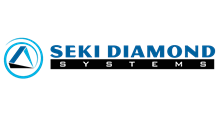
December 1 - 6, 2024
Boston, Massachusetts
Symposium Supporters
2024 MRS Fall Meeting & Exhibit
NM01.10.05
[1] A. Boyd, I. Dube, G. Fedorov, M. Paranjape, and P. Barbara, Carbon 69, 417–423 (2014).
[2] S. Nakahara, T. Morita, H. Omachi, M. Inaba, M. Nakano, and J. Suehiro, AIP Adv. 12, 125302 (2022).
[3] M. Inaba, K. Yagi, N. Asano, H. Omachi, M. Nakano, and J. Suehiro, AIP Adv., 14, 035140 (2024).
Response Properties of NO2 Gas Sensors Based on Ambipolar Carbon Nanotube FETs with Various Accumulation Amount
When and Where
Dec 5, 2024
3:30pm - 3:45pm
3:30pm - 3:45pm
Hynes, Level 2, Room 200
Presenter(s)
Co-Author(s)
Masafumi Inaba1,Haruka Omachi2,Michihiko Nakano1,Junya Suehiro1
Kyushu University1,Wakayama Medical University2
Abstract
Masafumi Inaba1,Haruka Omachi2,Michihiko Nakano1,Junya Suehiro1
Kyushu University1,Wakayama Medical University2
Carbon nanotubes (CNTs) are promising materials for gas sensors because of their large specific area and high sensitivity to charge differentiation. In CNT-based field-effect transistors (FETs) for gas sensing, we should consider the exact point of gas sensing; CNT channel, CNT/metal electrode contact, and CNT/CNT junctions. The potential modulation in the CNT channels and Schottky barrier height modulation at the CNT/metal electrode contact induced by the gas adsorption influence the electric current properties. Boyd et al.[1] reported that the device current increased with the total amount of CNT/CNT junctions in a device. In this study, we fabricated ambipolar CNT-FETs by the dielectrophoretic assembly varying the amount of CNTs to investigate and compare these effects on NO2 gas exposure through electrical properties. We exposed CNT FET gas sensors to N2 gas containing 100-ppb NO2. For devices with low CNT amount, two different responses were observed in the electric properties: A steady current shift in the positive direction in the hole-conduction region because of the channel potential modulation; an abrupt decrease in transconductance in the electron-conduction region because of the Schottky barrier modulation [2]. For devices with a large amount of CNTs, in which a network-like structure of CNTs was observed near the electrodes, increased current in both electron and hole conduction regions was observed compared with that for the device with a small amount of CNTs. This response is consistent with that of CNT/CNT X-type contacts, which have high resistance before NO2 adsorption [3]. Evaluation of time constants revealed that CNT/electrode contacts and CNT/CNT X-type contacts exhibited high NO2 adsorption and desorption rates, respectively.[1] A. Boyd, I. Dube, G. Fedorov, M. Paranjape, and P. Barbara, Carbon 69, 417–423 (2014).
[2] S. Nakahara, T. Morita, H. Omachi, M. Inaba, M. Nakano, and J. Suehiro, AIP Adv. 12, 125302 (2022).
[3] M. Inaba, K. Yagi, N. Asano, H. Omachi, M. Nakano, and J. Suehiro, AIP Adv., 14, 035140 (2024).
Keywords
C | electrical properties
Symposium Organizers
Sofie Cambré, University of Antwerp
Ranjit Pati, Michigan Technological University
Shunsuke Sakurai, National Institute of Advanced Industrial Science and Technology
Ming Zheng, National Institute of Standards and Technology
Session Chairs
Ranjit Pati
Ming Xu




